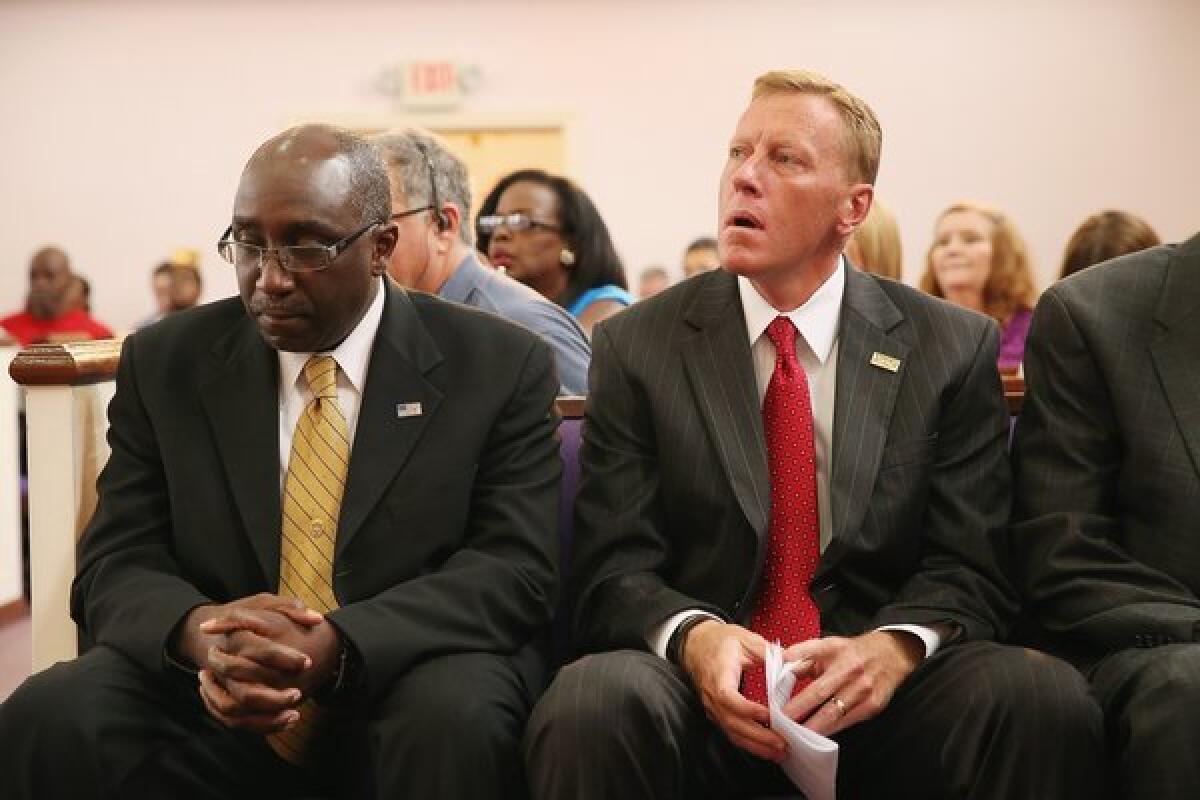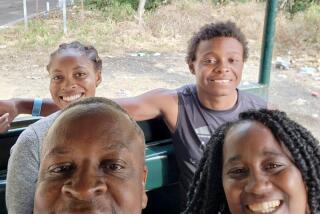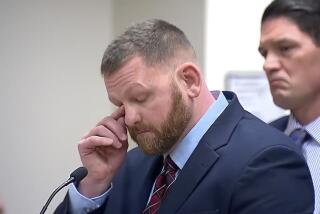For Sanford’s Chief Cecil Smith, it’s talk the talk, walk the walk

SANFORD, Fla. -- Police Chief Cecil Smith came to this city in the early heated days of controversy over the fatal shooting of Trayvon Martin by a neighborhood watch volunteer named George Zimmerman.
It was April 1, 2012, six weeks after the shooting, when Smith, 52, was appointed. Not only was there simmering tension in the community over the case, but Smith was replacing Bill Lee, who had been fired after declining to bring charges.
Smith certainly had the police experience: 26 years in law enforcement in Elgin, Ill., population 108,000, roughly twice the size of Sanford, and had risen to deputy chief.
On April 11, Special Prosecutor Angela Corey charged Zimmerman with second-degree murder. It fell to Smith to keep the peace.
His first 100 days felt like triage, he said.
Smith was raised on Chicago’s west side and had seen the riots there in April 1968, sparked by the assassination of Martin Luther King Jr.
“They burnt down Roosevelt Road, and they’re still trying to rebuild that,” he said of Chicago’s major thoroughfare to the western suburbs.
Smith looked around Sanford and saw a city that, like much of Florida, was still trying to recover from the housing crisis and economic downturn.
“If they burn this down, nobody’s going to rebuild it,” he said.
So Smith took to the streets each Thursday for what he calls “walk and talk.” In the afternoon, he and about a dozen officers walk around a different neighborhood, doubling back to revisit certain areas, including Goldsboro, the historically black part of town.
As the Zimmerman trial wound down, Smith began meeting with Seminole County Sheriff Don Eslinger and other local law enforcement officials to create contingency plans for the verdict.
When the moment finally came Saturday, Smith was in court, positioned about 10 feet behind Zimmerman, near the sheriff. As soon as the verdict was read, Smith said, he was out of his seat, headed for the emergency operations center with the sheriff.
There were large, unruly protests in cities across the country following Zimmerman’s acquittal, but in Sanford, the streets were clear, protests small and peaceful, with no arrests or clashes with police—a credit to the new chief, many said.
“We can choose to stay where we were, or we can say we don’t like what’s happened but we need to come together and move on,” Smith told about 70 people, mostly black Sanford residents, who gathered for an interfaith service at a local church Monday.
Smith looked more minister than police chief, pacing the altar, exhorting the crowd. He told them that since coming to town, he had heard from many on the streets, by phone and email, and was aware they were still unhappy with the department, as well as the verdict.
After the service, he held and impromptu briefing with the mayor in the church, and a few black residents lobbed questions about an arrest during a protest at a lakefront park the night before that Smith had attended.
On camera, Smith addressed the incident, which he said occurred not at the park but in Goldsboro and was unrelated to the verdict. Then he gave the residents his office phone number.
“What we have to do is have people stop thinking every time police arrest somebody it’s racist,” he said, “We’re trying to be as transparent as we can.”
When the residents followed him outside, detailing problems with police searches and alleged harassment of young black men, particularly the night of the verdict, Smith stayed to talk.
“You can’t feel our pain,” one of the women said.
Smith said he hears that a lot.
“People tell me you’re not from around here, you can’t understand,” he said. “You’ve got to give me a chance.”
One woman later agreed.
“He walked into the lion’s den,” Rose Casey said. “We have to give him a chance to straighten things out.”
ALSO:
Photos: Rallies for Trayvon Martin continue across the nation
From one street in Sanford, Fla., to the streets of N.Y. and L.A.
Sanford mayor, police chief at Monday service: ‘We came together’
More to Read
Start your day right
Sign up for Essential California for news, features and recommendations from the L.A. Times and beyond in your inbox six days a week.
You may occasionally receive promotional content from the Los Angeles Times.







